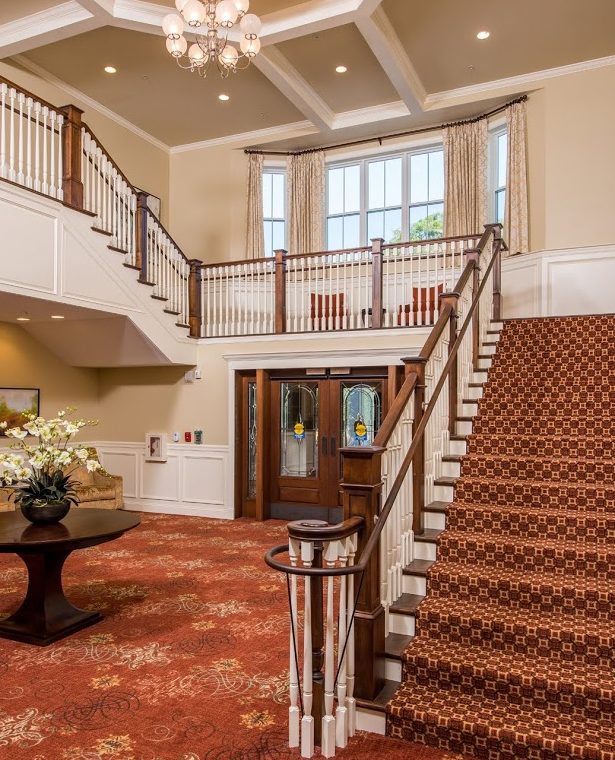by Erik Anderson
Wellness in design is not a new idea, but it has grown in popularity and is now a trendy topic throughout the country. The wellness trend is twofold: socially hip and business savvy. Wellness is everywhere, from brand-named fitness and outdoor-wear, to organic foods and eco-packaging, to yoga and meditation.
The building industry has long been aware of the benefits of sustainability in its broader context. Since LEED was established in the 1990s, companies have noticed the benefits of sustainable building for employees. LEED-certified building has proven to reduce employee absenteeism and time off due to depression or other stress-related conditions. While LEED focused on sustainable building, WELL buildings concentrate on the health, productivity, and overall well-being of its occupants.
Buildings are designed for people. Our decisions as architects affect the people in those buildings, and no one more so than senior living residents who spend the majority of their days within the same building. With this in mind, what can we do in the senior living building industry to support a focus on wellness? Here are a few ideas:
- Promote drinking water. Over two-thirds of the human body is comprised of water which helps regulate our internal body temperature, serves as a shock absorber for the brain and spinal cord, and is the medium for transport of nutrients and waste. Providing a cue to drink water is as simple as a beautiful arrangement of glass water jars or a tap with artistically arranged glassware.
- Build age-friendly gardens. According to the Centers for Disease Control (CDC), only 12% of Americans meet the daily fruit recommendation and 9% the vegetable recommendation of 2 to 3 cups per day. Senior living environments can encourage a more plant-based diet. Age-friendly vegetable gardens can be built as raised beds or vertically, so seniors do not have to bend to tend to the garden. Gardens will encourage locally grown vegetable consumption and improve resident health.
- Offer proper daylighting. Daylighting is also critical for a wellness-focused building. Much research has been done on the circadian rhythm. The circadian rhythm is essentially a 24-hour internal clock that regulates body functions, including sleep. Research shows that high frequency, intense light and blue/green light promote alertness, while a lack of this stimulus signals the body to reduce energy expenditure and prepare for rest. As the late evening sun shifts to amber, melatonin is released, which induces sleep. Some LED lights are designed to change throughout the day, mimicking the light of the sun. However, exposure to natural light through windows is key to ensuring that residents receive enough light for positive psychological effects.
- Promote fitness. Another wellness opportunity is the promotion of fitness. At PROCON, we encourage fitness in our designs by creating a prominent, grand stair. By locating beautiful stairs in high activity areas, we inspire residents to use the stair to communicate between common areas rather than elevators. Using the stairs improves cardiovascular health, strengthens legs and core muscles, and helps to build bone strength, which is crucial for seniors.
- Include nature-focused design. The World Health Organization defines health as “a state of complete physical, mental, and social well-being, and not merely the absence of disease or infirmity.” To improve the mental well-being of residents, architects can create nature-focused designs. The human bond with nature, termed “biophilia” in architecture, incorporates nature into buildings through views, pattern, and indoor plants. Including direct or indirect elements of nature into the built environment reduces stress, blood pressure levels, and heart rates, while it increases productivity, creativity, cognition, and mood.
As Malcolm Gladwell coined the phrase “the tipping point,” it is clear that culturally we are at a wellness tipping point, and the senior living industry can embrace it. By combining nature-focused design with the promotion of water consumption, age-friendly gardens, proper daylighting, and the value of fitness, we can create healthier and happier environments for seniors.














